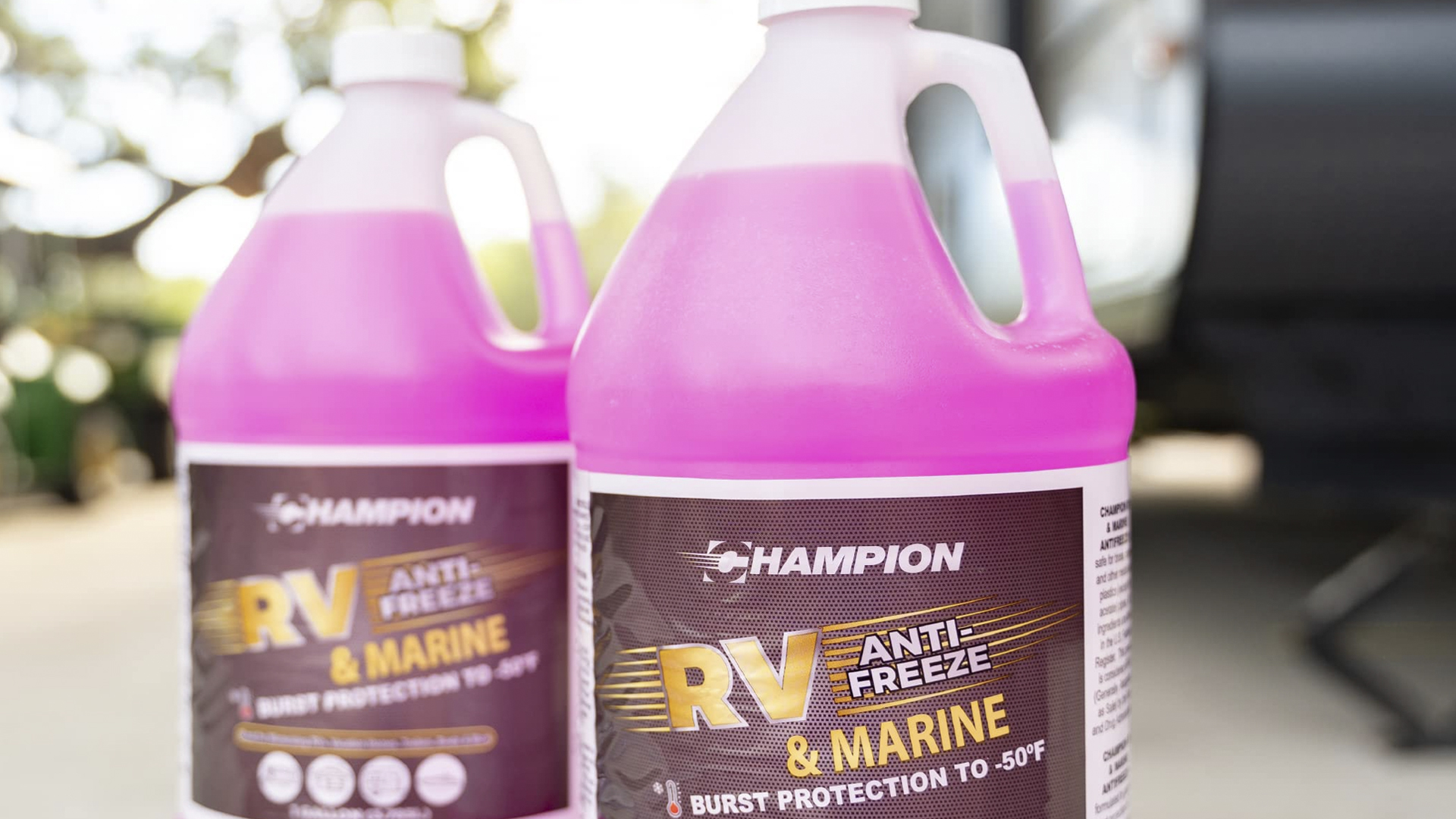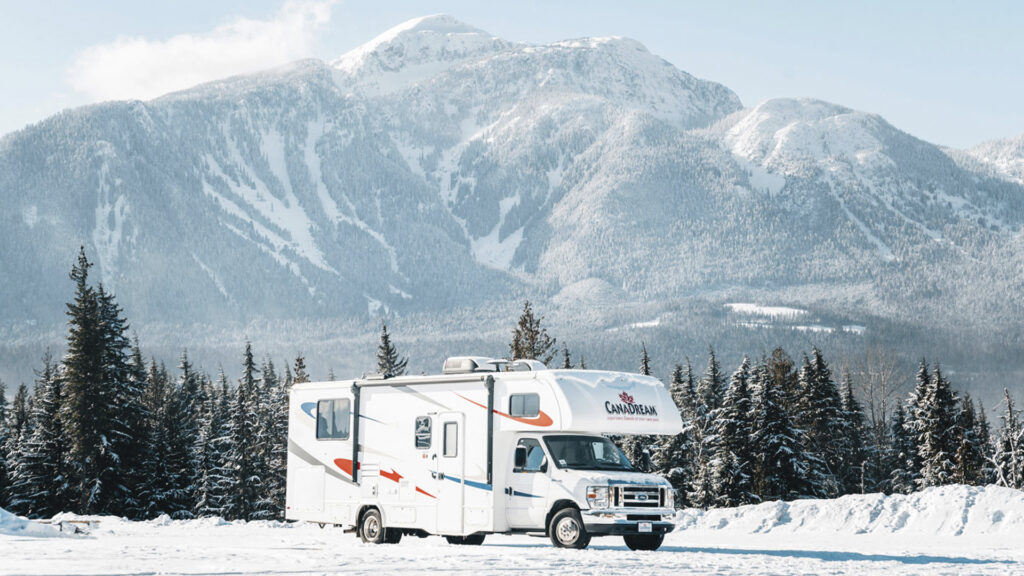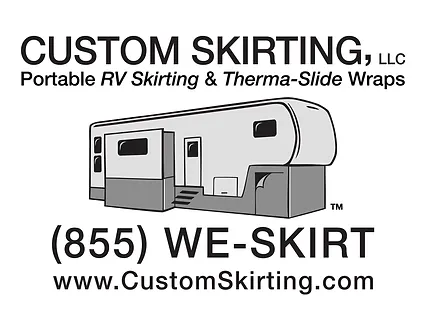
What is RV Antifreeze Made Of? A Comprehensive Guide
Table of contents
Winterizing your RV is an essential task for protecting its plumbing system from freezing temperatures. Without proper preparation, frozen pipes can lead to costly repairs and significant damage to your RV’s water system. A key component of this process is RV antifreeze, a specialized solution distinct from automotive antifreeze. But what is RV antifreeze made of, and why is it so important? In this guide, we’ll explore the composition of RV antifreeze non toxic, its ingredients, and its role in safeguarding your RV during winter. By understanding what’s in RV winterizing fluid and how to use it, you can enjoy worry-free travels regardless of the season.
Understanding RV Antifreeze
Definition and Purpose
RV antifreeze is a non-toxic solution specifically designed to protect the water systems of recreational vehicles during freezing conditions. Unlike automotive antifreeze, which contains toxic ethylene glycol, RV antifreeze ingredients are formulated to be safe for use in potable water systems. Its primary function is to lower the freezing point of water, preventing pipes, valves, and tanks from freezing and bursting. When used correctly, RV antifreeze ensures that your RV remains protected throughout the winter.
Main Ingredients of RV Antifreeze
The main ingredients of RV antifreeze are typically propylene glycol and ethanol. Propylene glycol-based antifreeze is known for its non-toxic properties and excellent freeze protection, making it a preferred choice for many RV owners. Ethanol-based antifreeze, on the other hand, is less expensive but may have drawbacks such as reduced freeze protection and potential harm to septic systems. The distinctive pink color of most RV antifreeze products is added for easy identification, ensuring you don’t confuse it with other liquids.
How These Ingredients Work
- Propylene Glycol: This ingredient lowers the freezing point of water while also providing lubrication to seals and gaskets within the plumbing system.
- Ethanol: This alcohol-based ingredient also prevents freezing but evaporates more quickly and can be less effective in extreme cold.
By combining these ingredients, RV winterizing fluid effectively protects your RV from winter damage.
Types of RV Antifreeze

Propylene Glycol-Based Antifreeze
Propylene glycol-based antifreeze is highly favored for RV winterization due to its non-toxic nature and superior freeze protection. It is safe for potable water systems and often provides burst protection at lower temperatures compared to other types. Additionally, propylene glycol helps to lubricate seals, which can extend the life of your RV’s plumbing components. While it may be more expensive than ethanol-based options, its safety and effectiveness make it a worthwhile investment.
Ethanol-Based Antifreeze
Ethanol-based antifreeze is a cost-effective alternative, but it comes with some limitations. While it can prevent freezing, its effectiveness diminishes at extremely low temperatures. Additionally, ethanol can have a drying effect on seals and is less environmentally friendly due to its potential to harm septic systems. For RV owners looking for budget-friendly options, ethanol-based antifreeze may suffice in milder climates.
Blended Antifreeze Products
Blended antifreeze products combine ethanol and propylene glycol to balance cost and performance. These formulations aim to provide better freeze protection than ethanol alone while remaining more affordable than pure propylene glycol products. However, the effectiveness and safety of blended antifreeze can vary, so it’s important to choose a product that meets your specific needs.
Safety Considerations
Toxicity and Environmental Impact
One of the biggest advantages of RV antifreeze is its non-toxic nature, making it safe for potable water systems and less harmful to the environment. Unlike automotive antifreeze, which can be fatal if ingested, RV antifreeze ingredients are designed to minimize toxicity. This makes it a safer choice for households with pets and children, as accidental exposure is less likely to cause severe harm. However, it’s still important to handle RV antifreeze carefully and dispose of it properly to avoid environmental contamination. Spilling or improperly discarding RV antifreeze can still have negative effects on the environment, especially in large quantities. Always follow local disposal regulations and consider using environmentally certified products when available.
Proper Handling and Storage
To maximize the effectiveness of RV antifreeze, follow these handling and storage tips:
- Shelf Life: Most RV antifreeze has a shelf life of 1-2 years. Check the expiration date before use.
- Storage Conditions: Store RV antifreeze in a cool, dry place away from direct sunlight.
- Precautions: Wear gloves when handling the product, and keep it out of reach of children and pets.
Using RV Antifreeze Effectively
Winterization Process
To winterize your RV using RV antifreeze, follow these steps:
- Drain the Water System: Empty all water tanks and lines to remove as much water as possible.
- Bypass the Water Heater: Use a bypass kit to prevent antifreeze from entering the water heater.
- Add Antifreeze: Using a pump or gravity feed, introduce RV antifreeze into the plumbing system. Ensure all faucets, valves, and toilets are filled with antifreeze.
- Check for Coverage: Run antifreeze through all water outlets to ensure complete protection.
Concentration and Temperature Ratings
Understanding antifreeze concentration and temperature ratings is crucial for effective winterization. Burst protection indicates the temperature at which pipes may rupture, while freeze protection ensures water remains liquid. Choose an RV winterizing fluid with appropriate ratings for your climate to prevent damage.
Alternatives and Complementary Methods
While RV antifreeze is highly effective, some RV owners use compressed air to blow out water lines as an alternative or complementary method. This involves using an air compressor to remove residual water from the plumbing system, reducing the amount of antifreeze needed. Combining compressed air with RV antifreeze provides comprehensive protection, especially in extremely cold conditions.
De-Winterizing Your RV

When warmer weather arrives, it’s time to de-winterize your RV. Follow these steps to prepare your water system for use:
- Flush the System: Use clean water to thoroughly flush out the RV antifreeze, ensuring all traces are removed from pipes, faucets, and tanks. This step is crucial to prevent any residual antifreeze from affecting the taste or safety of your water.
- Sanitize the System: Disinfect the water lines and tanks to ensure safe drinking water. Use a solution of water and household bleach (1/4 cup of bleach for every 15 gallons of water) to sanitize. Allow the solution to sit for several hours before flushing thoroughly with clean water.
- Inspect for Damage: Check all components, including pipes, faucets, and tanks, for any cracks, leaks, or other signs of damage caused by winter conditions. Address any issues before resuming use.
- Test the Water System: Run fresh water through the entire system to verify that it operates correctly and no antifreeze remains.
By properly de-winterizing your RV, you can enjoy a seamless transition from winter storage to spring adventures, ensuring that your water system is clean, safe, and fully functional.
Understanding what is RV winterizing fluid made of and how it works is essential for protecting your RV during winter. With its non-toxic ingredients like propylene glycol and ethanol, RV antifreeze ensures your plumbing system remains intact in freezing conditions. Whether you choose a propylene glycol-based, ethanol-based, or blended product, proper use of RV antifreeze is key to avoiding costly repairs and ensuring a worry-free travel experience. Equip yourself with this knowledge, and your RV will be ready to handle even the harshest winters.
Protect Your RV This Winter with Custom Skirting – Stay Warm, Stay Safe!
Don’t let harsh winter weather compromise your RV’s plumbing system or antifreeze efficiency. Invest in the nation’s #1 custom RV skirting solution to insulate your RV and protect it from freezing conditions. Our expertly tailored skirting, designed on-site with a unique “No-Snap, No-Gap” channel system, offers unbeatable defense against water, snow, and wind. Tested across the toughest winters in the U.S. and Canada, it’s built to keep you adventuring year-round with peace of mind. Ready to winterize your RV?
Click here to get your custom RV skirting today and enjoy unmatched protection for every journey!
